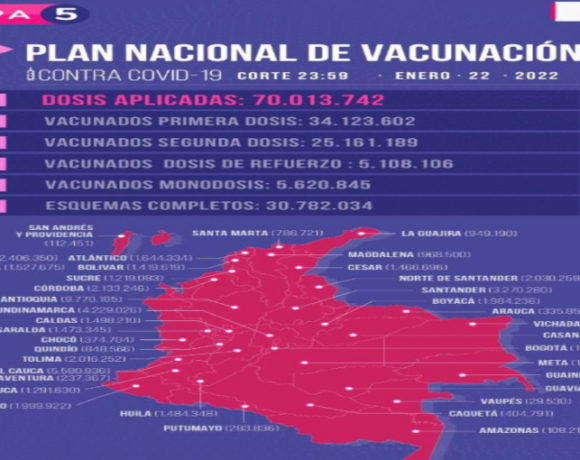Medellin, Colombia International-Health Sectors Seen Growing in 2017

Editor’s Note: The following article — originally authored in Spanish by Colombia Ministry of Health economist Jhon Gonzalez Lindarte — is reprinted by special permission granted to Medellin Herald by El Pulso, the monthly newsletter published by Medellin-based San Vicente Fundacion.
Despite the current panorama of financial troubles in Colombia’s national health system, export services from the Colombian health sector continue to expand, attracting ever-more international patients.
Colombia has been working to export health services for more than a decade, a market that is growing and expanding to provide opportunities and medical alternatives to patients in other countries.
The initiative seeks to provide care, treatments, diagnoses or specialized interventions to foreign patients who come to medical institutions in Colombia to receive a service that perhaps in their home countries is not provided or is not-so-developed – or may be much-more expensive.
Not only Colombia, but also other countries in Latin America including Mexico, Brazil and Costa Rica are developing this health-export market, which has become an important source of foreign-exchange earnings.
According to a recent report by Proexport Colombia, the global health export market has grown to an estimated US$15 billion, a figure that keeps growing annually.
This health-export market — also known as “health tourism” — consists of four categories: curative medicine, preventive medicine, aesthetics and wellness.
All of them are potentially exploitable in Colombia, so in 2008 the Ministry of Commerce, Industry and Tourism created the Productive Transformation Program (PTP) to encourage this sector and create an alternative source of foreign currency earnings — in addition to traditional tourism.
The estimate for PTP is that by 2032, at least 2.8 million foreigners would visit Colombia for medical purposes — about nine-times the estimated number of medical-tourists that came to Colombia in 2015.
According to PTP, the year 2015 closed with 31,884 tourists who traveled to Colombia for medical services. Just during the January-through-April period 2015, these patients spent a total of US$37.9 million on health services.
Meanwhile, from January-to-April 2016, Colombian exports from health tourism amounted to US$17.35 million – a disappointing 45.7% drop from the US$37.9 million generated from health tourism from January to April 2015.
If that US$37.9 million spending from the first four months of 2015 were annualized for the entire year 2015 – and assuming a similarly annualized international patient count for full-year 2015 — then that would represent an estimated US$113.7 million in health-tourism spending in Colombia in 2015, or a simple-math average of US$3,566 per patient.
However, if medical-tourism to Colombia indeed eventually hits the 2.8 million patients goal estimated by PTP — and if each patient spends only US$1,000 per patient (in 2016 dollars) — then revenue from health tourism to Colombia could soar to a whopping US$2.8 billion (2016 dollars), or roughly US$8.4 billion if the average patient spends US$3,000 (2016 dollars).
Growth and expansion of the health-tourism market cannot be possible without the medical institutions that make large investments in order to develop and improve their health services.
In Bogota, institutions such as the Cardioinfantil Foundation and the Fundación Santafé de Bogotá are outstanding examples of health-service investment. In Bucaramanga, the Cardiovascular Foundation also stands out, while in Medellín the hospitals San Vicente Foundation and Pablo Tobón Uribe are among the notable examples of health-services investment growth.
Medical institutions in Colombia also have won international recognition for quality and reliability, as 16 of them are nationally accredited and two others have prestigious Joint Commission International (JCI) certification for safety and quality of care.
Meanwhile, Colombian hospitals and clinics continue to receive international patients from several different continents.
In the case of Antioquia, according to the Chamber of Commerce of Medellín, 45% of foreigners who receive medical services in the department come from the Antilles and the Caribbean; 23% come from North America; 13% from Europe; 12% from elsewhere in South America; 4% from Central America; 2% from Asia; and 1% from Oceania.
Colombian medical services that mainly attract international patients included cardiology, dentistry, neurosurgery, oncology, ophthalmology, aesthetic medicine, orthopedics, joint replacements and neurosurgery.
Former ProColombia director María Claudia Lacouture (now the Colombian Minister of Commerce, Industry and Tourism) earlier revealed to journalists that Colombia has become one of the world’s top health-tourism destinations because of excellent preparation of medical staff and international quality certifications obtained.
These gains in quality and prestige show that Colombian health tourism has even more potential, with 2017 projected to be a year in which investment in this area will resemble the growth rates sustained over the last five years.
















